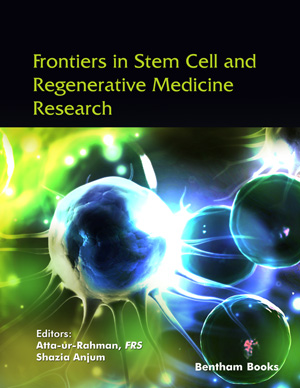
Abstract
Emerging evidence suggests that ascorbic acid (vitamin C) enhances the reprogramming process by multiple mechanisms primarily due to its cofactor role in Fe(II) and 2-oxoglutarate-dependent dioxygenases, including the DNA demethylases Ten Eleven Translocase (TET) and histone demethylases. Epigenetic variations have been shown to play a critical role in somatic cell reprogramming. DNA methylation and histone methylation are extensively recognized as barriers to somatic cell reprogramming. N6-methyladenosine (m6A), known as RNA methylation, is an epigenetic modification of mRNAs and has also been shown to play a role in regulating cellular reprogramming. Multiple cofactors are reported to promote the activity of these demethylases, including vitamin C. Therefore, this review focuses and examines the evidence and mechanism of vitamin C in DNA and histone demethylation and highlights its potential involvement in the regulation of m6A demethylation. It also shows the significant contribution of vitamin C in epigenetic regulation, and the affiliation of demethylases with vitamin C-facilitated epigenetic reprogramming.
Keywords: Vitamin C, reprogramming, DNA demethylation, histone demethylation, RNA demethylation, iron and 2-oxoglutarate dependent dioxygenases, somatic cell regeneration.
Graphical Abstract
[http://dx.doi.org/10.1038/385810a0] [PMID: 9039911]
[http://dx.doi.org/10.1016/j.cell.2007.11.019] [PMID: 18035408]
[http://dx.doi.org/10.1038/nprot.2007.418] [PMID: 18079707]
[http://dx.doi.org/10.1016/j.copbio.2007.09.007] [PMID: 18024106]
[http://dx.doi.org/10.1038/nature05944] [PMID: 17554336]
[http://dx.doi.org/10.1126/science.1151526] [PMID: 18029452]
[http://dx.doi.org/10.1016/j.cell.2012.11.039] [PMID: 23260147]
[http://dx.doi.org/10.1021/acs.jmedchem.5b00789] [PMID: 26322868]
[http://dx.doi.org/10.1016/j.cell.2008.07.041] [PMID: 18691744]
[http://dx.doi.org/10.1016/j.stemcr.2016.12.017] [PMID: 28111279]
[http://dx.doi.org/10.1016/j.stemcr.2015.02.022] [PMID: 25866157]
[http://dx.doi.org/10.3390/jcm4061193] [PMID: 26239553]
[http://dx.doi.org/10.1371/journal.pbio.0060253] [PMID: 18942890]
[http://dx.doi.org/10.1016/j.stem.2013.02.005] [PMID: 23499384]
[http://dx.doi.org/10.1126/science.1239278] [PMID: 23868920]
[http://dx.doi.org/10.1016/j.stem.2015.01.013] [PMID: 25658369]
[http://dx.doi.org/10.1038/nature07107] [PMID: 18600261]
[http://dx.doi.org/10.1038/ng.2491] [PMID: 23202127]
[http://dx.doi.org/10.1530/REP-15-0338] [PMID: 26515777]
[http://dx.doi.org/10.3945/an.113.004168] [PMID: 24038247]
[http://dx.doi.org/10.1016/j.mam.2012.08.001] [PMID: 22981780]
[http://dx.doi.org/10.1038/nature05913] [PMID: 17522671]
[http://dx.doi.org/10.1007/s000180050121] [PMID: 9487383]
[http://dx.doi.org/10.1038/35049533] [PMID: 11262868]
[http://dx.doi.org/10.1038/s41576-018-0074-2] [PMID: 30479381]
[http://dx.doi.org/10.1017/S0029665119000016] [PMID: 30777143]
[http://dx.doi.org/10.1111/odi.12446] [PMID: 26808119]
[http://dx.doi.org/10.3389/fonc.2014.00359] [PMID: 25540771]
[http://dx.doi.org/10.1186/s13148-015-0087-z] [PMID: 25977731]
[http://dx.doi.org/10.1038/nature23876] [PMID: 28825709]
[http://dx.doi.org/10.1016/j.cell.2017.07.032]
[http://dx.doi.org/10.1146/annurev.nutr.25.050304.092647] [PMID: 16011461]
[http://dx.doi.org/10.5604/17322693.1180642]
[http://dx.doi.org/10.1016/j.ab.2014.12.013] [PMID: 25576954]
[http://dx.doi.org/10.1038/nature12362] [PMID: 23812591]
[http://dx.doi.org/10.1016/j.stem.2009.12.001] [PMID: 20036631]
[http://dx.doi.org/10.1016/j.stem.2011.10.005] [PMID: 22100412]
[http://dx.doi.org/10.1021/ja4028346] [PMID: 23768208]
[http://dx.doi.org/10.1002/stem.493] [PMID: 20687155]
[http://dx.doi.org/10.1016/j.cell.2007.02.005] [PMID: 17320507]
[http://dx.doi.org/10.1016/j.cell.2013.12.019] [PMID: 24439369]
[http://dx.doi.org/10.1126/science.1170116] [PMID: 19372391]
[http://dx.doi.org/10.1038/nature09303] [PMID: 20639862]
[http://dx.doi.org/10.1126/science.1210944] [PMID: 21817016]
[http://dx.doi.org/10.1126/science.1210597] [PMID: 21778364]
[http://dx.doi.org/10.1038/nature12750] [PMID: 24153300]
[http://dx.doi.org/10.1126/science.1169786] [PMID: 19372393]
[http://dx.doi.org/10.1038/ng.471] [PMID: 19881528]
[http://dx.doi.org/10.1038/nature08514] [PMID: 19829295]
[http://dx.doi.org/10.1016/j.ygeno.2014.08.012] [PMID: 25173569]
[http://dx.doi.org/10.1016/j.cell.2014.04.017] [PMID: 24813617]
[http://dx.doi.org/10.1186/1756-8935-8-1] [PMID: 25621012]
[http://dx.doi.org/10.1126/science.1212483] [PMID: 21940858]
[http://dx.doi.org/10.1038/ncomms1240] [PMID: 21407207]
[http://dx.doi.org/10.1101/gr.130997.111] [PMID: 22357612]
[http://dx.doi.org/10.1126/science.1229277] [PMID: 23223451]
[http://dx.doi.org/10.1038/ncb1176] [PMID: 15448701]
[http://dx.doi.org/10.1016/j.stem.2013.08.005] [PMID: 24012367]
[http://dx.doi.org/10.1016/j.stem.2014.01.001] [PMID: 24529596]
[http://dx.doi.org/10.1038/nature11925] [PMID: 23395962]
[http://dx.doi.org/10.1038/nature11333] [PMID: 22902501]
[http://dx.doi.org/10.1038/ncb2748] [PMID: 23685628]
[http://dx.doi.org/10.1016/j.stem.2011.01.008] [PMID: 21295276]
[http://dx.doi.org/10.1016/j.stem.2010.04.014] [PMID: 20621050]
[http://dx.doi.org/10.1038/ncb2765] [PMID: 23708003]
[http://dx.doi.org/10.1073/pnas.1212769110] [PMID: 23386720]
[http://dx.doi.org/10.1038/ng.2807] [PMID: 24162740]
[http://dx.doi.org/10.1073/pnas.51.5.786] [PMID: 14172992]
[PMID: 4363659]
[http://dx.doi.org/10.1021/bi00889a003] [PMID: 14114491]
[http://dx.doi.org/10.1073/pnas.72.1.205] [PMID: 164015]
[http://dx.doi.org/10.1042/bj1000020C] [PMID: 16742404]
[http://dx.doi.org/10.1042/bj0980888] [PMID: 5911533]
[http://dx.doi.org/10.1073/pnas.1735528100] [PMID: 14578449]
[http://dx.doi.org/10.1073/pnas.74.3.864] [PMID: 265581]
[http://dx.doi.org/10.1016/0006-291X(77)90352-7] [PMID: 836318]
[http://dx.doi.org/10.1074/mcp.M700021-MCP200] [PMID: 17267393]
[http://dx.doi.org/10.1016/j.gde.2005.01.005] [PMID: 15797199]
[http://dx.doi.org/10.1038/47412] [PMID: 10638745]
[http://dx.doi.org/10.1126/science.1063127] [PMID: 11498575]
[http://dx.doi.org/10.1016/B978-0-12-380866-0.60003-4] [PMID: 20920745]
[http://dx.doi.org/10.1186/gb-2005-6-8-227] [PMID: 16086857]
[http://dx.doi.org/10.1016/j.cell.2007.02.009] [PMID: 17320510]
[http://dx.doi.org/10.1016/j.cell.2004.12.012] [PMID: 15620353]
[http://dx.doi.org/10.1016/j.sbi.2010.09.006] [PMID: 20970991]
[http://dx.doi.org/10.1177/1947601911417976] [PMID: 21941621]
[http://dx.doi.org/10.1016/j.gde.2007.12.003] [PMID: 18281209]
[http://dx.doi.org/10.1016/j.stem.2013.12.015] [PMID: 24506885]
[http://dx.doi.org/10.1093/cvr/cvu023] [PMID: 24477643]
[http://dx.doi.org/10.1002/bies.201400072] [PMID: 25328107]
[http://dx.doi.org/10.1016/j.cell.2011.03.003] [PMID: 21477851]
[http://dx.doi.org/10.1016/j.cell.2010.04.037] [PMID: 20550931]
[http://dx.doi.org/10.1158/0008-5472.CAN-07-2938] [PMID: 18483246]
[http://dx.doi.org/10.1038/nature04433] [PMID: 16362057]
[http://dx.doi.org/10.1371/journal.pone.0125626] [PMID: 25993097]
[http://dx.doi.org/10.1186/s13072-017-0143-3] [PMID: 28706564]
[http://dx.doi.org/10.1074/jbc.RA119.009757] [PMID: 31341023]
[http://dx.doi.org/10.1182/bloodadvances.2016003384] [PMID: 29296732]
[http://dx.doi.org/10.1038/nrg3724] [PMID: 24662220]
[http://dx.doi.org/10.1016/j.tibs.2012.12.006] [PMID: 23337769]
[http://dx.doi.org/10.1016/j.jgg.2013.10.002] [PMID: 24480744]
[http://dx.doi.org/10.1016/0092-8674(75)90158-0] [PMID: 164293]
[http://dx.doi.org/10.1016/j.cell.2012.05.003] [PMID: 22608085]
[http://dx.doi.org/10.1093/nar/18.19.5735] [PMID: 2216767]
[http://dx.doi.org/10.1016/0022-2836(77)90110-3] [PMID: 592376]
[http://dx.doi.org/10.1038/nature12730] [PMID: 24284625]
[http://dx.doi.org/10.1038/ncb2902] [PMID: 24394384]
[PMID: 9409616]
[http://dx.doi.org/10.1016/0042-6822(83)90508-1] [PMID: 6318439]
[http://dx.doi.org/10.1016/j.celrep.2014.05.048] [PMID: 24981863]
[http://dx.doi.org/10.1007/s00239-002-2339-8] [PMID: 12355263]
[http://dx.doi.org/10.1038/nchembio.1432] [PMID: 24316715]
[http://dx.doi.org/10.1038/nature21073] [PMID: 28099411]
[http://dx.doi.org/10.1093/oxfordjournals.hmg.a018914] [PMID: 11001926]
[http://dx.doi.org/10.1089/adt.2012.480] [PMID: 23557020]
[http://dx.doi.org/10.1038/cr.2014.3] [PMID: 24407421]
[http://dx.doi.org/10.1038/nchembio.687] [PMID: 22002720]
[http://dx.doi.org/10.1007/s003359901144] [PMID: 10501967]
[http://dx.doi.org/10.1038/ng2048] [PMID: 17496892]
[http://dx.doi.org/10.1126/science.1141634] [PMID: 17434869]
[http://dx.doi.org/10.1371/journal.pgen.0030115] [PMID: 17658951]
[http://dx.doi.org/10.1126/science.1151710] [PMID: 17991826]
[http://dx.doi.org/10.1038/nature08921] [PMID: 20376003]
[http://dx.doi.org/10.1016/j.molcel.2012.10.015] [PMID: 23177736]
[http://dx.doi.org/10.1371/journal.pone.0016210] [PMID: 21264265]
[http://dx.doi.org/10.1016/j.stem.2014.09.019] [PMID: 25456834]
[http://dx.doi.org/10.1126/science.1261417] [PMID: 25569111]
[http://dx.doi.org/10.1261/rna.041178.113] [PMID: 24141618]
[PMID: 23118484]
[http://dx.doi.org/10.1038/nature11112] [PMID: 22575960]
[http://dx.doi.org/10.1128/MCB.4.3.538] [PMID: 6201720]
[http://dx.doi.org/10.1038/cr.2014.151] [PMID: 25412662]
[http://dx.doi.org/10.1016/j.cell.2013.10.047] [PMID: 24269006]
[http://dx.doi.org/10.1038/nn.3449] [PMID: 23817550]
[http://dx.doi.org/10.1016/j.stem.2015.01.016] [PMID: 25683224]
[http://dx.doi.org/10.1016/j.stem.2015.09.005] [PMID: 26526723]
[http://dx.doi.org/10.1089/cell.2016.0041] [PMID: 28682669]
[http://dx.doi.org/10.1016/j.biopha.2019.108613] [PMID: 30784918]
[http://dx.doi.org/10.1016/j.celrep.2017.02.059] [PMID: 28297667]
[http://dx.doi.org/10.1101/gad.262766.115] [PMID: 26159994]












